Why Is Food Safety Important In Healthcare? Healthcare Leaders Guide
Learn challenges healthcare foodservice teams face today and key food safety practices to protect vulnerable patients. Get a free healthcare leader...
Your guide to keeping freezer burn out of your kitchen.
Freezer burn is a common issue in commercial kitchens, impacting both the appearance and quality of stored food.
But with the right practices, you can easily avoid it, all while keeping food waste low and the number of satisfied clients high.
FoodDocs is an easy-to-use Food Safety Management software that helps businesses with food safety monitoring tasks such as logging freezer temperatures more consistently, accurately, and quickly.
Freezer burn happens when frozen food loses moisture and becomes dehydrated, usually due to improper packaging or storage. Though it affects quality, it doesn't pose a food safety risk.
Freezer burned food looks:
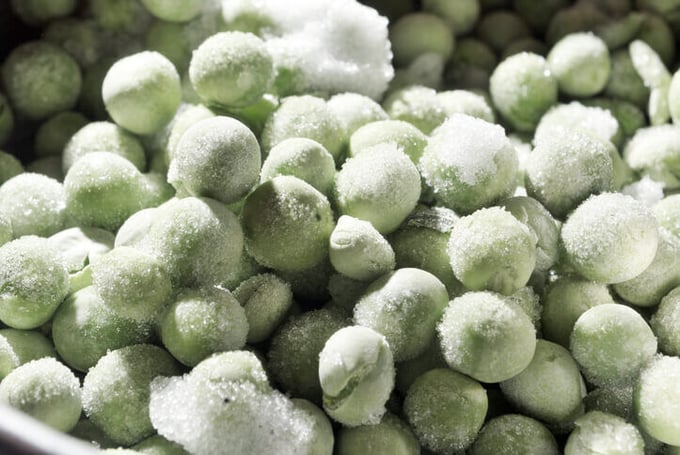
It's easy to confuse freezer burn with ice crystals, but they’re different.
Freezer burn occurs when moisture evaporates from the food over time, leaving dry patches. Ice crystals, however, form when hot or improperly cooled food is frozen too quickly, trapping moisture inside.
Ice crystals don’t always mean your food is freezer burned. That said, you should use proper cooling methods (e.g., using blast chillers, ice baths, or ice paddles) to completely cool food before freezing to avoid crystal formation.
Here's a short table comparison the main differences between freezer burn and ice crystals:
| Aspect | Freezer Burn | Ice Crystals |
|---|---|---|
| Cause | Loss of moisture due to prolonged air exposure or improper packaging. | Moisture from improperly cooled food that freezes too quickly. |
| Appearance | Grayish-brown, dry, leathery patches on the surface of food. | Clear or white crystals of frozen water on the surface or inside packaging. |
| Texture | Dry, tough, and sometimes gritty; surface appears rough or hard. | No immediate texture change until melted; food remains soft. |
| Impact on food quality | Degrades texture, flavor, and overall quality; unappealing appearance. | Minimal to no impact if handled correctly; can result in soggy texture if excessive. |
| Food safety | Safe to eat but may taste unpleasant. | Safe to eat and often doesn’t affect taste or quality. |
| Prevention | Proper packaging, limiting air exposure, and maintaining correct freezer temp. | Ensure food is cooled before freezing to avoid excess moisture formation. |
There are a few factors that cause freezer burn:
A term called "sublimation" is the process than often leads to freezer burn. In the context of freezing food, sublimation occurs when ice transforms into water vapor without first becoming a liquid as a result of dry freezer air.
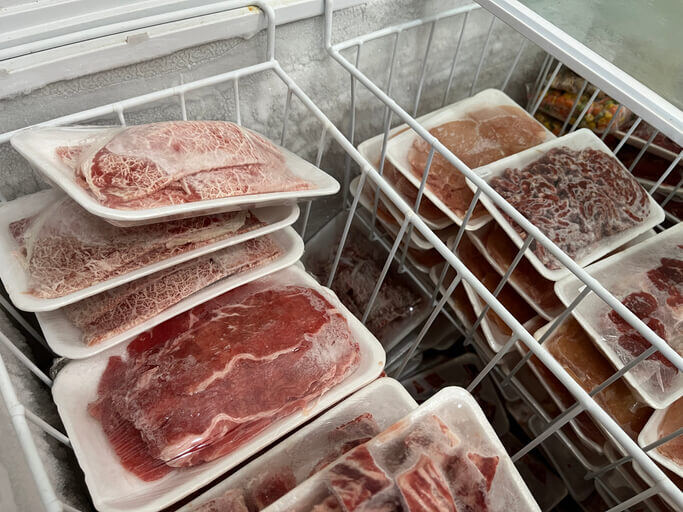
Follow these seven practical tips to prevent freezer burn:
Before freezing, make sure food is cooled down properly to room temperature. Cooling prevents rapid moisture evaporation that can lead to ice crystals and freezer burn. Always follow the best cooling practices to avoid bacterial growth during this phase.
Opt for airtight freezer containers, vacuum seal freezer safe bags, or heavy-duty freezer wraps. These materials minimize air exposure, which is the main cause of freezer burn. Double-wrapping delicate items like meats and fish adds an extra layer of protection.
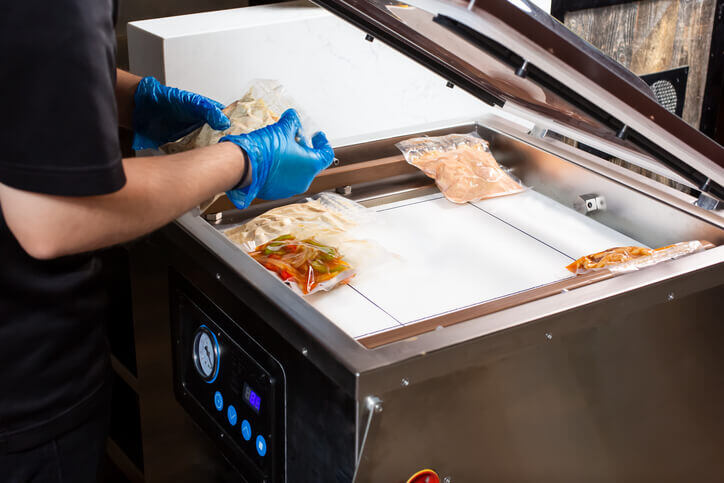
Freezer temperature should remain consistently at or below 0°F (-18°C). Regularly calibrate thermometers to ensure this accuracy. Fluctuating freezer temperatures increase the risk of freezer burn. Using digital monitoring tools, like FoodDocs, ensures that temperature logs are always accurate and up-to-date.
Frequent or prolonged door openings introduce warm air, causing condensation, which leads to ice crystals and freezer burn. Train kitchen staff to retrieve items efficiently and avoid unnecessary door openings.
Thawing and refreezing food disrupts its cellular structure, making it more prone to drying out and freezer burn. Only take out what is needed, and properly portion food before freezing to reduce unnecessary thawing.
Always practice the "First In, First Out" or FIFO method. This ensures that older items are used first, reducing the risk of freezer burn caused by prolonged storage. Labeling and organizing shelves also helps prevent confusion and waste. Use a freezer organization chart to help your team rotate foods more effectively.
While freezing extends shelf life, most foods shouldn’t be stored indefinitely. Keep a rotation schedule for food, and always follow the recommended freezing times for specific items (e.g., six months for raw meat). Foods left for an extended period in the freezer are more likely to develop freezer burn, even with the best precautions.
Download the free poster to use in your kitchen so team members can always remember seven tips for how to prevent freezer burn.
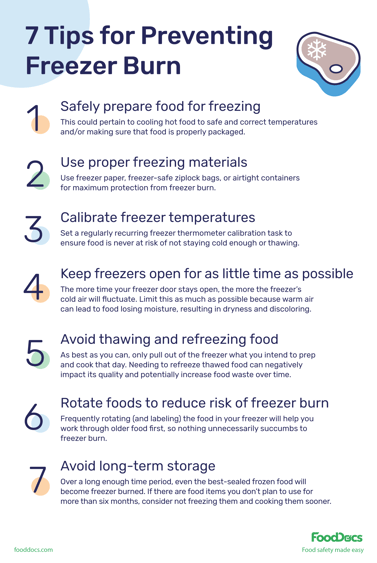

Thank you for downloading our free template!
Want to create a full HACCP plan in 1 hour?
How about a digital Food Safety Management System in 15 minutes?
Yes, freezer-burned food is safe to eat, though its texture and flavor may be less appealing. The effects of freezer burn won’t cause food poisoning, according to the USDA, as long as the food has been kept at safe and correct temperatures.
But in cases of severe freezer burn, the main reason you'd throw them away is because it fails to meet your business's high quality standards.
Food businesses should implement freezer burn prevention tips into their daily tasks because, as the Canadian Institute of Food Safety highlights:
This is an issue for food businesses since serving a menu item that tastes off, even if it is safe to eat, will not be appealing to customers. Food businesses need to be able to identify whether food is freezer burned in order to determine what food should be tossed for quality issues.
No, freezer burn does not cause food poisoning. However, it can affect the overall quality of the food, making it less desirable for commercial kitchens aiming for top-tier dishes.
While it's positive that you won't get food poisoning, you can expect to experience these negative aspects of freezer burn:
As you've seen, freezer burned foods affect both food safety and quality standards. Daily tasks such as logging freezer temperatures can be tough to monitor on paper over the long-term.
It's one of the reasons why companies are increasingly adopting food safety software.
FoodDocs' digital Food Safety Management System makes food safety easy by taking paper-based systems and quickly digitizing them.
This allows teams to do things like fill daily freezer temperature logs, cleaning logs, and receiving logs —multiple times a day — more:
Because of that, teams can more easily ensure food safety compliance, from monitoring to traceability.
In the context of wanting to avoid freezer burn, this means you'll be able to:
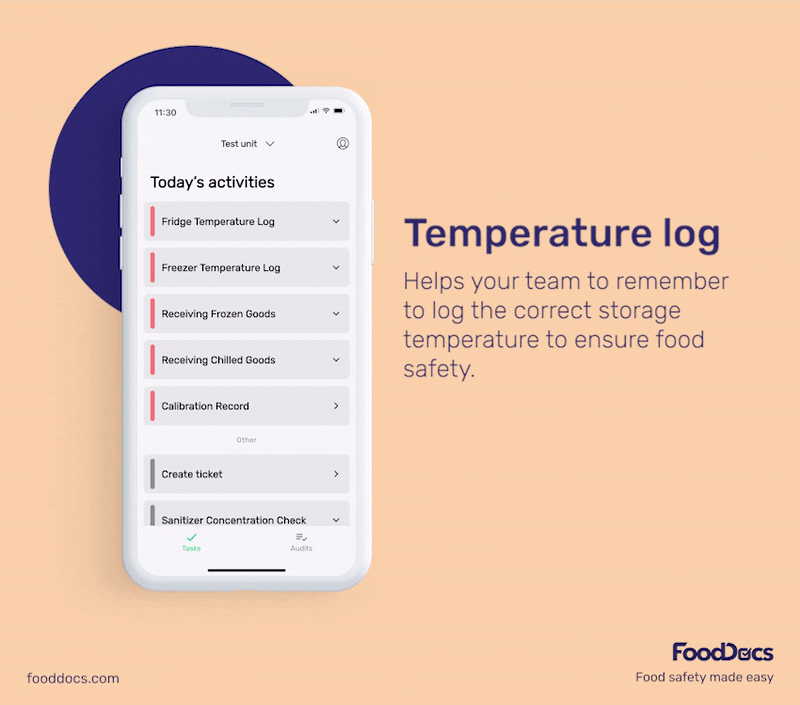
You can choose from our food safety software's automatically generated logs or create custom temperature logs based on the types of freezers and freezer conditions your business has.
Digital freezer temperature logs will result in more accurate readings. Here's why:
We also have temperature sensor integration partners to automate the freezer temp monitoring process remotely.
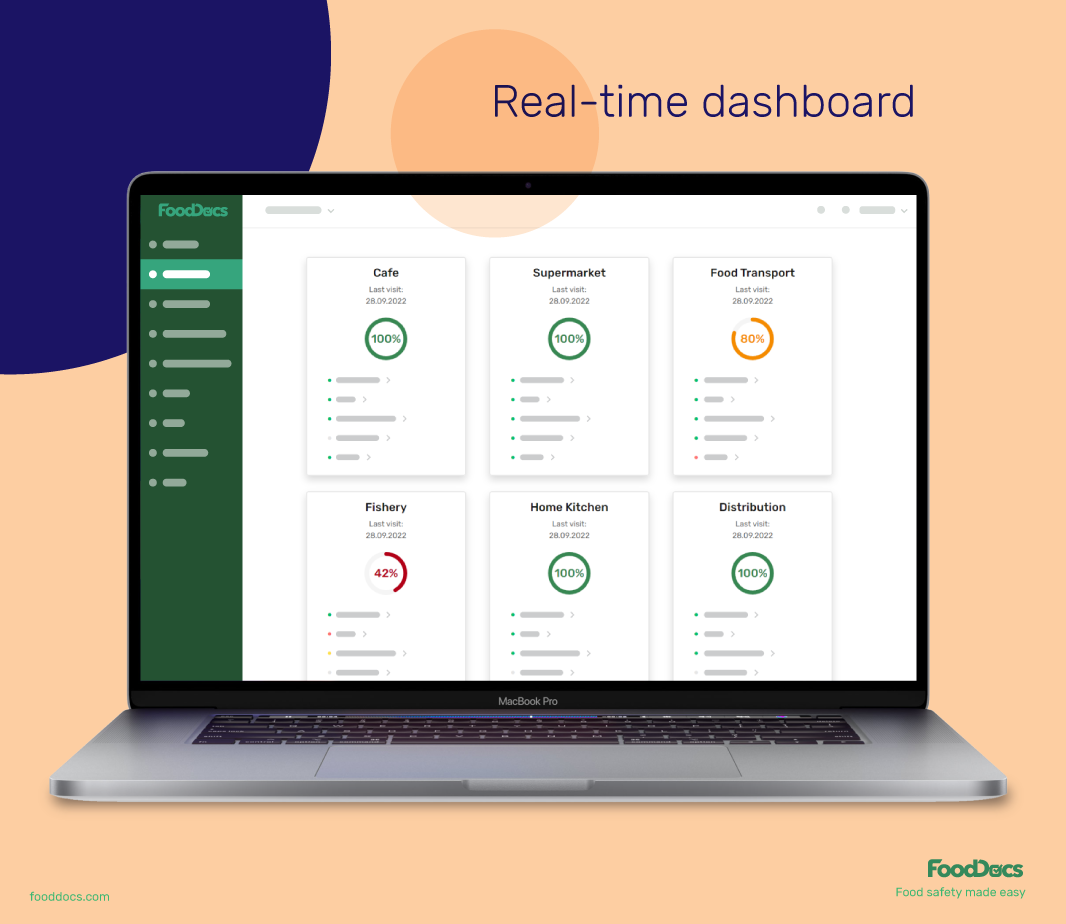
If you're the one responsible for your business's overall food safety compliance, the real-time overview dashboard will be a key part of your day. From there you get a high-level view of which departments or locations/units are in full or partial compliance.
Whether you’re on-site or remote, you can set up monitoring food safety tasks that always need to be verified once team members complete their entries. This feature is essential for food establishments that hold their food safety operation to very high standards.
See how the FoodDocs Monitoring and Traceability system work in this quick explainer video!
If freezer burn alters the flavor, using aromatics, spices, herbs, or marinades can help. While it won’t completely restore the original quality, a well-seasoned dish still has the potential to taste delicious.
The USDA suggests the option to "cut freezer-burned portions away either before or after cooking the food." However, for kitchens aiming for the highest safety and quality standards, heavily freezer-burned foods may not even make it to the prep line.
No, freezer burn cannot be reversed because it results from moisture loss that permanently affects the texture and flavor of food.
While you can't fully restore freezer-burned meat, using marinades can help reintroduce moisture and mask the dryness. Acidic marinades with ingredients like vinegar, lemon juice, or yogurt can break down the toughened fibers, while flavorful oils and spices can enhance the taste. Slow cooking methods, such as stewing or braising, can also help tenderize the meat and make it more enjoyable.
Freezer-burned food may develop an off-putting odor due to its dry, exposed areas. To counter this, use strong aromatics like garlic, onions, herbs, or spices during cooking. Ingredients like rosemary, thyme, or ginger can help mask the smell. Cooking the food in broths, sauces, or gravies can also help cover any lingering freezer burn scent.
Yes, food with ice crystals is safe to eat. Ice crystals form when food hasn’t been properly cooled before freezing or when air has entered the packaging, but they don’t necessarily indicate freezer burn. As long as the food has been stored at or below 0°F (-18°C), it remains safe for consumption, though you may notice slight textural changes after thawing.
Not necessarily. Freezer-burned food is safe to eat, although its texture and flavor may not be ideal. If the appearance or taste isn't appealing, you might choose to discard it or repurpose it in dishes where seasoning or cooking methods may help mask its lower quality. The decision to throw it away depends on your kitchen’s guidelines and quality standards.
Freezer burn is mainly caused by the loss of moisture when food is exposed to air. This often occurs due to improper packaging or wrapping that allows air to seep in. Extended freezer storage times also increase the risk, as moisture gradually evaporates from the food. Ensuring airtight packaging and rotating stored items regularly helps reduce freezer burn.
No, freezer burn isn’t caused by the freezer being too cold. It's less about the freezer temperature and more about the quality of the packaging (or lack thereof). Freezer burn can also occur as a result of long-term storage. However, inconsistent freezer temperatures, such as frequent opening and closing of freezer doors, can contribute to freezer burn by creating fluctuating conditions that allow air exposure.
Learn challenges healthcare foodservice teams face today and key food safety practices to protect vulnerable patients. Get a free healthcare leader...
Learn what Standard Operating Procedures (SOPs) are and how to write effective SOPs that ensure consistency, efficiency, and safety in your...
Boost your retail food safety with essential practices and digital tools to protect customers and your brand. Plus a free Retail Food Safety Leader...